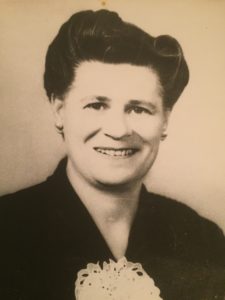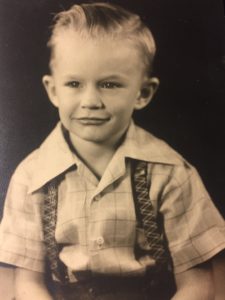You’re getting ready now to thru-hike the Appalachian Trail and I’d like a word with you, especially you older men and women. [I turned 73 on my hike.] I left Springer Mountain, GA, on Feb. 15, 2015, in 8 degree weather, and climbed Mt. Katahdin in Maine on July 14, 149 days later, and I learned a few things I think could help you.
Physical conditioning
Some people do nothing to get in shape before embarking on a 2,200-mile hike over countless mountains in all sorts of weather. They plan to start slow, they say, and get in shape on the trail.
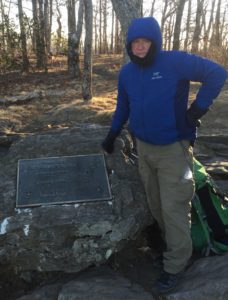
That’s a mistake. I think the lack of physical conditioning is a big reason why a fourth of the NoBos [north bound hikers] quit before they get to North Carolina, according to the Appalachian Trail Conservancy.
I did some things wrong before I left on my hike: I didn’t have some of the equipment I needed; the food I started with left a lot to be desired; I had almost no respect for bad weather. But I did get in shape before I left – I lifted weights and hiked 1,000.7 miles around my neighborhood carrying a pack.
That’s overdoing it just a bit, hiking 1,000 miles, but I urge you: Get in shape. Those first few weeks will be a lot more tolerable and, more important, you will reduce the chance of injury.
Guarding Against The Unthinkable: Failure
Three fourths of the people who start out on a thru-hike don’t finish, according to the Appalachian Trail Conservancy, and there are three things that could stop you. One you can’t do anything about; one you can mitigate; and one you can eliminate.
- The first, a crisis at home. That will either happen or it won’t. You can’t do much about that.
- The second is physical, injury or illness. You can reduce the possibility that either one will end your hike by getting in shape and by starting as early as is reasonable in your circumstance. If you can start early enough to finish by, say, mid-August you could take off two months to nurse an injury or illness and still complete your hike.
-
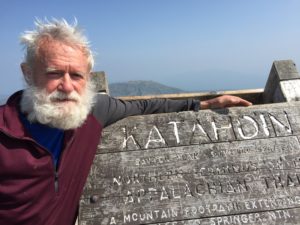
Lucky at Mt. Katahdin in Maine, July 14, 2015 The third is mental. Some people, when the going gets tough, give up. It’s as if they didn’t know they were going to be wet, cold, tired, hungry, and hurting, that they were going to be some of those things just about all of the time and all of those things some of the time. That’s a given. So make up your mind, right now, before you get on the trail: No matter what, you’re going to finish. Do that and you’re way ahead of the game.
Equipment
I never saw any two thru-hikers who were carrying identical equipment. Think about that. Lots of different stuff works. In selecting equipment just try to figure out what’s best for you, considering everything, including price.
There are only two equipment rules I advise you to remember:
One, the three most important things about back packing are pack weight, pack weight, and pack weight. And the corollary: everything weighs something.
Two, if you need it and don’t have it you don’t need it.
Attitude
I was never in danger of giving up, never considered it for a moment because I had made up my mind. However, for a month or more I didn’t have as much fun as I could have had –should have had – because I had a bad attitude.
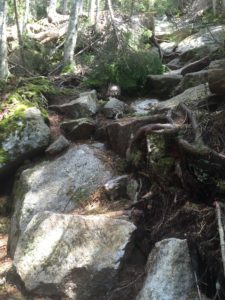
I was resentful for a while. I had “signed up” for a hike and, believe you me, in the North, a good part of the time you’re not going to be hiking, at least not by my definition. You’re going to be rock hopping and rock climbing for miles on end.
So my advice to you is, relax. It is what it is, and there’s no helping it. When I finally accepted that, and fixed my attitude, I started having fun again.
Let It Happen
I’m not opposed to planning ahead. If I were you I’d read the guide book you’ve chosen, I’d even study it a little. But you need to be flexible when you get out there, need be willing to change your plans.
For me, the two best parts about the hike were the people I met –other hikers and trail angels– and the fact that I could never be sure how the day was going to end. And it often ended better than I had planned, better, even, than I had hoped.
And A Final Note
It wouldn’t hurt you to start out, from Day One, being grateful. You are embarking on what may be the best time of your life, not because the rest of your life will be so bad but because this time of your life will be so good.
Lucky, AKA Pat Stith
Coming Friday: “Were They Talking About Me?”
